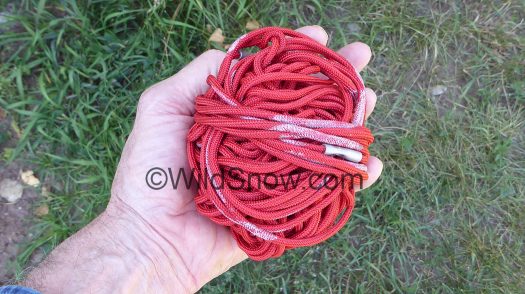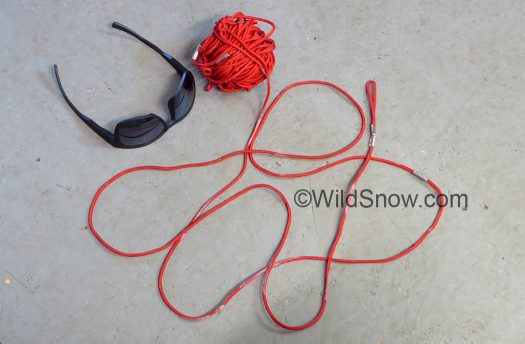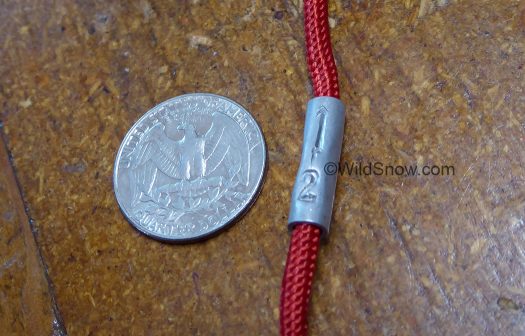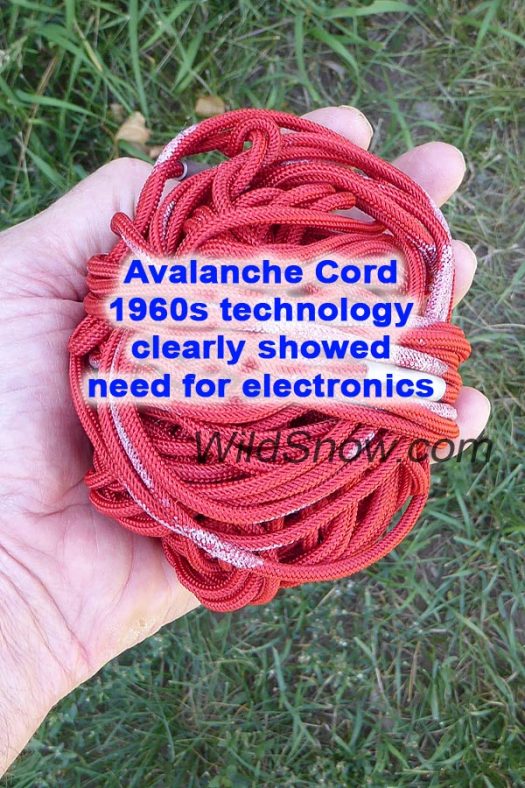The history of electronic avalanche locator beacons is somewhat recent, with the first truly functional units coming on board in the late 1960s. Before that, skiers employed various methods of locating a buried avalanche victim; methods that for the most part were largely (and sadly) ineffective. The most popular of these was the “avalanche cord,” simply a lengthy chunk of string, with direction and distance makerers. You’d trail the string out behind you while skiing. If buried, your partners ostensibly found the string and followed it to you.
This was way too time consuming of a rescue process. Moreover handling the spider web a larger group of skiers created was not pretty, not to mention time consuming storage winding-coiling that was worthy of nautical sail rigging. Good to look back, and thank heaven we now have electronic beacons.
I recall a few individuals in the 1960s era writing about the efficacy of avalanche cords, pondering if any live saves had ever occurred by virtue of using a cord. Consensus was a that a few climbers might have been saved when their rope was used in similar fashion, but there might have been only one or two documented saves that were definitely due to the use of an avalanche cord.

Avalanche cord, you’d stow it in a string ball or reel it in on some sort of spindle or spool you’d hang from your belt. Crimped metal markers indicated number of meters to victim.
Weight: 154 grams, 5.4 ounces (modern electronic beacon ~ 198 grams, 7.0 ounces)
Length: This cord is about 17 meters long, perhaps shortened, as apparently some were about 25 meters.
Markers: Spaced at 173 centimeters, odd, as I thought most avy cords had the markers as meters.
(Thanks goes to Mary Ann Parke for donation of this avalanche cord to the WildSnow collection.)
WildSnow.com publisher emeritus and founder Lou (Louis Dawson) has a 50+ years career in climbing, backcountry skiing and ski mountaineering. He was the first person in history to ski down all 54 Colorado 14,000-foot peaks, has authored numerous books about about backcountry skiing, and has skied from the summit of Denali in Alaska, North America’s highest mountain.



